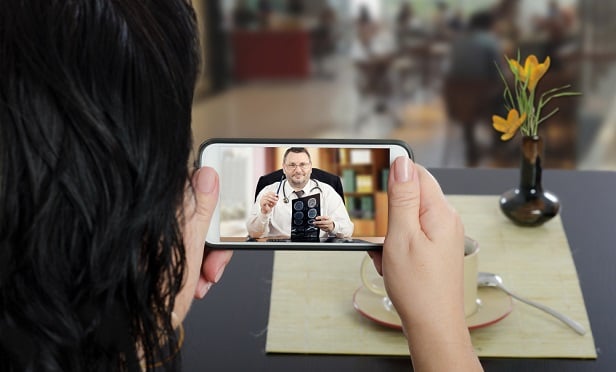 From 2014to 2018, usage of non-hospital-based provider-to-patienttelemedicine grew more rapidly in urban than rural areas. (Photo:Shutterstock)
From 2014to 2018, usage of non-hospital-based provider-to-patienttelemedicine grew more rapidly in urban than rural areas. (Photo:Shutterstock)
Telemedicine — particularly outside of the hospital setting — isexploding, according to FAIR Health's white paper, “A Multilayered Analysis of Telehealth – How ThisEmerging Venue of Care Is Affecting the HealthcareLandscape.”
|FAIR Health analyzed more than 29 billion private health careclaim records in its repository and found that non-hospital-basedprovider-to-patient telemedicine from 2014 to 2018 grew 1,393percent (from 0.007 percent to 0.104 percent of allmedical claim lines) vastly more so than the other types oftelemedicine: follow-up calls after patients are discharged frominpatient hospital stays; physician calls made patients visitinghospital emergency departments or admitted as inpatients; and callsbetween health care professionals for consultation purposes.
|For all types of telemedicine within that same time period,usage grew 624 percent, from 0.0192 percent to 0.1394 percent ofall medical claim lines, according to the analysis.
|Related: More physicians are embracingtelemedicine
|The top three reasons why people used telemedicine outside ofthe hospital setting were for acute upper respiratory infectionswith symptoms such as sinus inflammation and sore throat; mooddisorders such as depression; and anxiety and other nonpsychoticmental disorders – mirroring the top reasons why people typicallyvisit their primary doctor's office.
|Other common reasons why people used non-hospital telemedicineinclude for injury, poisoning and other consequences of externalcauses; urinary system issues and health services related toreproduction.
|Other key findings of FAIR Health's analysis include:
- From 2014 to 2018, usage of non-hospital-basedprovider-to-patient telemedicine grew more rapidly in urban thanrural areas. In urban areas, claim lines for this type oftelemedicine increased 1,227 percent from 0.01 percent to 0.13percent of all urban medical claim lines. In rural areas, theincrease was 897 percent from 0.01 percent to 0.05 percent of allrural medical claim lines
- During that same time period, the age group most associatedwith telemedicine overall was that of individuals age 31-40, whoaccounted for 21 percent of the distribution of all telemedicineclaim lines. But most of the claim lines (82 percent) fordischarge-related provider-to-patient telemedicine were associatedwith individuals 51 and older.
- Sixty-five percent of all telemedicine claim lines inthat same time period were associated with females. But fortelemedicine visits associated with a hospital discharge, 53percent of claim lines were submitted for females.
- In 2018, the telemedicine diagnosis with the highest rate ofpatients who had an in-person visit within 15 days of anon-hospital-based provider-to-patient telemedicine visit for thesame or a very similar diagnosis was heart failure. Of patientsdiagnosed with this condition via telemedicine, 57 percent wereseen in person within 15 days.
Read more:
Complete your profile to continue reading and get FREE access to BenefitsPRO, part of your ALM digital membership.
Your access to unlimited BenefitsPRO content isn’t changing.
Once you are an ALM digital member, you’ll receive:
- Critical BenefitsPRO information including cutting edge post-reform success strategies, access to educational webcasts and videos, resources from industry leaders, and informative Newsletters.
- Exclusive discounts on ALM, BenefitsPRO magazine and BenefitsPRO.com events
- Access to other award-winning ALM websites including ThinkAdvisor.com and Law.com
Already have an account? Sign In
© 2024 ALM Global, LLC, All Rights Reserved. Request academic re-use from www.copyright.com. All other uses, submit a request to [email protected]. For more information visit Asset & Logo Licensing.








